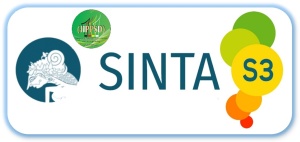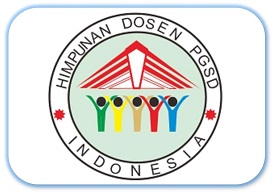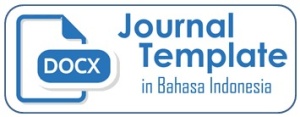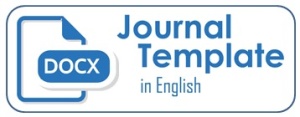Developing Elementary Science Online Learning Content Using Schoology
 ), Usmeldi Usmeldi(2), Yullys Helsa(3), Desyandri Desyandri(4), Refiona Andika(5),
), Usmeldi Usmeldi(2), Yullys Helsa(3), Desyandri Desyandri(4), Refiona Andika(5), (1) Universitas Negeri Padang, Padang City
(2) Universitas Negeri Padang, Padang City
(3) Universitas Negeri Padang, Padang City
(4) Universitas Negeri Padang, Padang City
(5) Universitas Negeri Padang, Padang City
 Corresponding Author
Corresponding Author
DOI : https://doi.org/10.24036/jippsd.v8i2.129302
Full Text:
 Language : en
Language : en
Abstract
Keywords
References
Amini, R. (2015). Pengembangan Model Pembelajaran Konsep Dasar IPA SD Menggunakan Pendekatan SAVI. Pedagogi: Jurnal Ilmu Pendidikan, 15(1), 34-39.
Amini, R., & Helsa, Y. (2019, November). The Development of Problem-Based Learning Material for Integrated Science Subject in Primary Teacher Education Program. In Journal of Physics: Conference Series (Vol. 1280, No. 3, p. 032053). IOP Publishing.
Andika, R., Sari, I. K., Ningsih, Y., Masniladevi, & Helsa, Y. (2019). Assessment for learning of mathematics. Journal of Physics: Conference Series, 1321(2), 8–12. https://doi.org/10.1088/1742-6596/1321/2/022127
Anggraini, W., Anwar, Y., & Madang, K. (1999). Pengembangan Lembar Kerja Peserta Didik (LKPD) Berbasis Learning Cycle 7E Materi Sistem Sirkulasi Pada Manusia Untuk Kelas XI SMA. 49-57.
Aulia, A., & Masniladevi, M. (2021). Pengembangan Multimedia Interaktif Berbasis Articulate Storyline 3 untuk Meningkatkan Minat Belajar Peserta Didik pada Pembelajaran Tematik Terpadu di Kelas III SD. Jurnal Pendidikan Tambusai, 5(1), 602-607.
Connors-Kellgren, A., Parker, C. E., Blustein, D. L., & Barnett, M. (2016). Innovations and Challenges in Project-Based STEM Education : Lessons from ITEST. Journal of Science Education and Thechnology, 25 (6), 825.
Desyandri, D., & Vernanda, D. (2017). Pengembangan Bahan Ajar Tematik Terpadu di Kelas V Sekolah Dasar Menggunakan Identifikasi Masalah. Prosiding Seminar Nasional HDPGSDI Wilayah IV Tahun 2017.
Febriani, H., Khairuna, K., & Hutagalung, Y. S. R. (2022). Effectiveness of Schoology Learning Media During the Covid-19 Pandemic. Journal of Education And Teaching Learning (JETL), 4(2), 128-139.
Frey, B. B., & Schmitt, V. L. (2010). Teachers’ Classroom Assessment Practices. Middle Grades Research Journal, 5(3), 107–117. https://doi.org/ISSN 1937-0814
G. Wei. (2018). Discussion on the Coordinated Development and Innovation of National Music and Contemporary Multicultural Music Education. vol. 213, no. Ichssr, pp. 559–568.
Haleem, A., Javaid, M., Qadri, M. A., & Suman, R. (2022). Understanding the role of digital technologies in education: A review. Sustainable Operations and Computers, 3, 275–285. https://doi.org/https://doi.org/10.1016/j.susoc.2022.05.004
Hydayat, A., & Ariani, Y. (2022). Pengembangan Bahan Ajar E-Modul Berbasis Flip PDF Professional Materi Jaring-Jaring Bangun Ruang Sederhana di Kelas V SDN 24 Parupuk Tabing. Jurnal Pendidikan Tambusai, 6(2), 15683-15688.
Junaedi, D. (2019). Desain pembelajaran model ADDIE. Sukabumi: STAI Syamsul Ulum.
Kulik, J. A. (2002). School mathematics and science programs benefit from instructional technology. Infobrief Science Resources Statistics, NSF-03 301. https://eric.ed.gov/?id=ED472100
Mayasari, A., Asrizal, A., & Usmeldi, U. (2023). Effect size pengaruh pembelajaran berbasis sets terhadap kemampuan berpikir kritis dan hasil belajar siswa. LENSA (Lentera Sains): Jurnal Pendidikan IPA, 13(1), 67-76.
N. Andrijati. (2016). Penerapan Media Pembelajaran Inovatif dalam Pembelajaran Matematika Sekolah Dasar di PGSD UPP Tegal. J.Peneliti. Keislam, vol.31, No.2, pp. 123-132
N. Cavus and M. S. Alhih. (2014). Learning Management System Use in Science Education. Procedia-Soc.Behav.Sci., Vol. 143, pp. 517-520.
Putri, H. E., & Usmeldi, U. (2020). The Development of E-Modules Problem Based Learning Using Goole Classroom for Basic Electricity and Electronics At Vocational School. Cyberspace: Jurnal Pendidikan Teknologi Informasi, 4(2), 84-93.
Ranuharja, F., Ramadhani Fajri, B., Prasetya, F., & Dwinggo Samala, A. (2021). Development of Interactive Learning Media Edugame Using ADDIE Model. Jurnal Teknologi Informasi Dan Pendidikan, 14(1). https://doi.org/10.24036/tip.v14i1
Rencana Induk Penelitian UNP 2020-2024. (2020). Padang: LP2M UNP.
Renstra UNP 2020-2024. (2020) Padang: LP2M UNP.
Salmi, J. (2002). Facing the challenges of the twenty-first century. Perspectives: Policy and Practice in Higher Education, 6(1), 8–12. https://doi.org/10.1080/13603100120118959
S.Tinschert. (2006). Implementation of a Learning management System for a small American company.
Slavit, D., Nelson, T. H., & Lesseig, K. (2016). The Teacher’s Role in Developing, Opening, and Nurturing an Inclusive STEM-focused school. International Journal of STEM Education, 3 (1). https://doi.org/10.1186/s40594-016-0040-5.
Sugiyono. (2009). Metode Penelitian Kualitatif dan R&D. Alfabeta.
Supratman, E., & Purwaningtias, F. (2018). Pengembangan Media Pembelajaran E-Learning Berbasis Schoology. Jurnal Pengembangan IT (JPIT), 3(03).
Tigowati, T., Efendi, A., & Budiyanto, C. W. (2017). E-learning berbasis schoology dan edmodo: ditinjau dari motivasi dan hasil belajar siswa SMK. Elinvo (Electronics, Informatics, and Vocational Education), 2(1), 49-58.
Trianto, P. (2010). Penelitian Pendidikan Bagi Pengembangan Profesi Pendidikan dan Tenaga Pendidikan.
Trisnawati, S. N. I. (2022). Pengembangan Pembelajaran Ilmu Pengetahuan Alam (IPA) Berbasis Learning Management System Schoology di SMK Muhammadiyah Delanggu. Jurnal Pendidikan Nusantara, 1(1), 1-10.
Turner, S. L. (2014). Creating an assessment-centered classroom: Five essential assessment strategies to support middle grades student learning and achievement. Middle School Journal, 45(5), 3–16.
Udil, P. A. (2020). Persepsi Mahasiswa tentang Perkuliahan Berbasis E-Learning dengan Menggunakan Schoology. Fraktal: Jurnal Matematika dan Pendidikan Matematika, 1(1), 79-91.
Usmeldi, U., & Amini, R. (2022). Creative project-based learning model to increase creativity of vocational high school students. International Journal of Evaluation and Research in Education (IJERE), 11(4), 2155-2164.
Utami, R. P., Rosidin, U., & Wahyudi, I. (2017). Pengaruh penggunaan e-learning dengan schoology materi gravitasi newton terhadap hasil belajar siswa. Jurnal Pembelajaran Fisika Universitas Lampung, 5(2), 119302.
 Article Metrics
Article Metrics
 Abstract Views : 57 times
Abstract Views : 57 times
 PDF Downloaded : 5 times
PDF Downloaded : 5 times
Refbacks
- There are currently no refbacks.

This work is licensed under a Creative Commons Attribution 4.0 International License.







